Reality Check
An African safari…virtually.
Have you ever wanted to trek through the Amazon Rainforest, explore the Slovakian Caves, or travel to Barcelona, Spain? For free? Immediately? All in one day? Well, with new technology and a little bit of cardboard, “around the world in one day” can become a reality.
Google Cardboard transforms the area around you into a faraway place and all you need is some cardboard and a phone.
This past week Porsha Sanchez, a representative from Google, came to Apple Valley to show us how it is done. A few select teachers were given the opportunity to bring their classes down to the theatre during school to try out the new virtual reality program.
Mr. McCluskey, the school’s media specialist, explained that Google has been touting this Expeditions Pioneer Program, which allows students to experience the things they are learning about in class, instead of just talking about them and imagining what they look like.
“Google is in the Twin Cities in March touring this program, and we are the only school in the district that they are coming to. The goal for Google is to get good PR out there and work out the quirks a little before going public.”
So, how does it work? Google has created screen-viewing apparatuses made out of cardboard–yes, cardboard–with two cutouts for your eyes, covered with 40 mm lenses, and a simple slot where a smartphone slides right in. Because the frame of the goggles is simply constructed with cardboard, this system is unique and unlike any other virtual-reality system on the market.
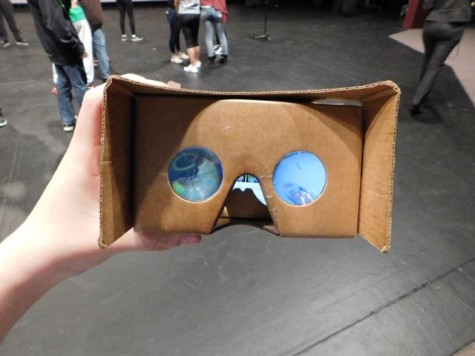
A view of the Google Cardboard lens.
When viewed through the lens, the phone and cardboard box create a 3D image in your brain. By splitting the phone screen in two, each eye sees a different picture, but with the focal lengths just right, your brain combines the two to make a virtual reality. Just by looking up, down, and all around, your brain and the phone screen work together to create a virtual world, which appears not-so-virtual to your eyes, and more like you are standing right there in the middle of the scene.
What the students see, however, is all in the control of the teacher. Teachers are given a tablet, the master remote, and from there, they show students around on the expedition. “The teacher has a tablet and they tour the students through the experience, so they get to control what the students see at the same time,” explains McCluskey.
So, what can you do with it? The possibilities are endless. Google partnered with teachers and content partners to create a new VR platform that showcases over 100 “journeys” for students to experience. Google Expeditions takes you to almost anywhere around the world, acting as a tour guide and giving you the freedom to explore your surroundings.
With the help of virtual reality, students can apply what they are learning in class to these various VR tours, helping them gain a better understanding of the content and background. McCluskey adds that “in almost all cases, the expedition that the class is going on in some way ties into their curriculum.” Mrs. Jagim’s World Literature class traveled to Syria to live the experience of Syrian refugees; the EaglEye crew explored a real TV newsroom; and Mr. Bergh’s Ecology class trekked through the Amazon Rainforest, all without leaving the walls of AVHS. “It’s as close to a real experience as [the students] could probably get,” says McCluskey.
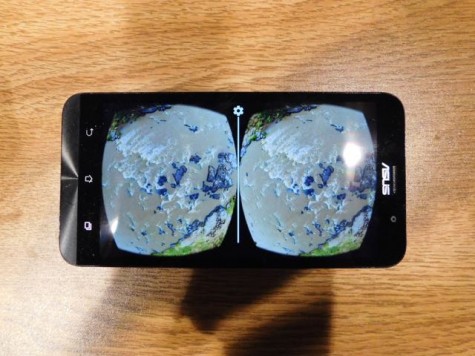
A dual-screen display allows the brain to form 3D images.
So what’s the verdict on Google Expeditions?
Mr. Bergh, whose class went on a tour of the Great Migration, spoke very highly of it. “I think there’s definitely a place for it, especially with giving students an ability to visualize something that you’re trying to talk about and giving them the experience of actually being somewhere.”
Jonny O’Brien, a senior and also a student of Bergh’s class who experienced the migration through Google Expeditions, would love to see a future of virtual reality within AVHS. “I believe that it would benefit us because it’s a whole new experience. You’re learning a lot about the 360 picture and what you don’t get to see in person. You really feel like you are there.”
So, what do I do if I want it now? Sanchez said this is the question people ask her the most. In a world of wanting things now, it is hard to wait for a release date sometime next fall. But, don’t worry–there are a few solutions.

Mr. Bergh guides his class through the Google Expedition.
“You can buy similar goggles online on Ebay or Amazon for like $10-$15,” Sanchez said. “Then it is just a cellphone and you can download really any 3-D virtual reality app for it to work.”
There are hundreds of VR apps available to download currently, which can be used with Google Cardboard lenses. Some of these include the original Cardboard app, which serves as a simple demo for first-time users; VRSE, which displays various short films with dazzling imagery; and even YouTube, in which viewers can watch certain videos in 360-degree views and added depth.
The overall goal of the Google Pioneer Program was to promote their new app to classrooms and educators around the world and work out any possible kinks before the app goes public. For now, consumers can purchase Google Cardboard lenses and various VR apps, but with a little patience, students everywhere will soon be able to travel to amazing places and immerse themselves in a new, innovative form of education, all at the touch of a button.




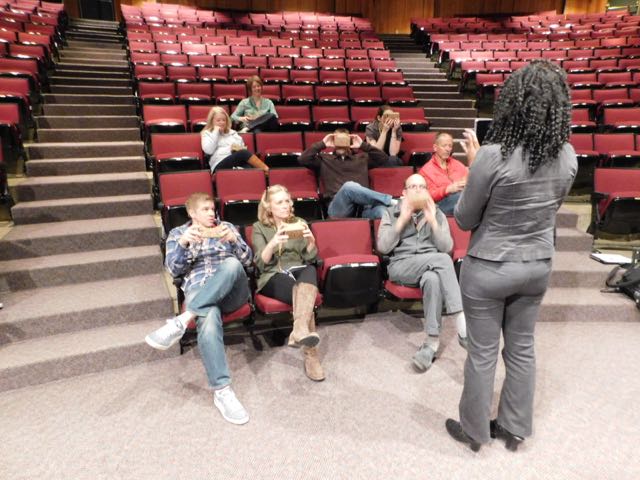
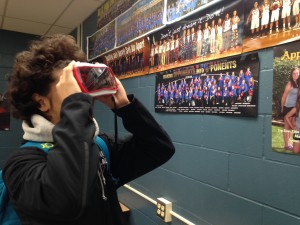
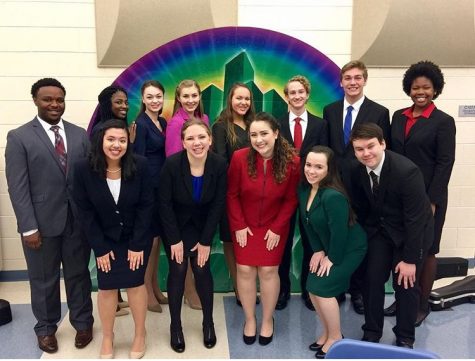



Drew McCluskey • Mar 29, 2016 at 3:24 pm
Very nice write-up, ladies! Great job and awesome pictures!
Jordan T. Knobel-Piehl • Mar 29, 2016 at 11:26 am
I actually got to try out Minecraft with the Oculus Rift (Minecrift?) at Minecon 2013 and it was a truly amazing experience. Now that Google Cardboard (which I got a viewer for just last week) has made VR affordable for anyone with a compatible mobile device, I think it’s only a matter of time before gaming becomes more immersive than ever.